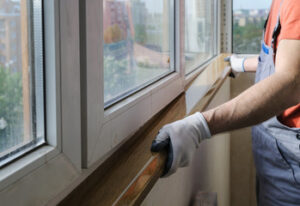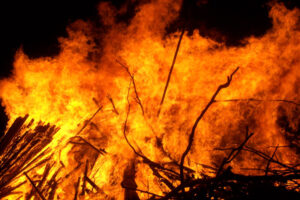Whether ugly, rotting windows make your home look shabby or drafty ones drive up energy bills, Maryland Window Replacement can ease the burden. But how do you choose the best company to install them?

Online research is helpful, but a face-to-face consultation (virtual or in-home) with an expert can help narrow your options.
The cost of window replacement depends on several factors. The size of the windows, frame material, and type will determine the overall price tag. Energy-efficient options will also increase the final bill, though they can save homeowners money on utility costs over time.
If you’re replacing a single window, you may be able to save by installing the new window yourself. This DIY option is generally less expensive than hiring a professional for an entire house of window replacements, but it can be a risky project for homeowners without the proper installation experience. Incorrect installation can lead to structural damage, water infiltration, and reduced energy efficiency.
Window frames — the structure that separates the glass from your home’s walls — are available in a variety of materials, each with its own benefits and drawbacks. Vinyl is a popular choice because it’s affordable, durable, and provides good insulation. However, it isn’t as visually appealing as wood frames.
Another factor that can influence the cost of a window replacement is its location in your home. Ground floor windows typically require less labor than basement or attic windows, which means lower installation costs. If your home is in a hurricane-prone area, you might need to invest in storm windows for added protection. And if your home has older windows, it might be necessary to install additional insulation or other energy-efficient upgrades.
Window replacements can improve your home’s appearance, reduce energy costs, and enhance security. But with so many options to consider, determining the best replacement windows for your needs can be a challenge. Fortunately, this guide can help you narrow down your options and find the perfect windows for your home. With the right selections, you can enjoy your beautiful new windows for years to come.
Window Replacement Options
There are a number of factors that determine which window replacement option is best for your home. This includes the style of windows you’re replacing, how they’ll be used in your home, and the performance you need from them.
For instance, if the current windows are not functioning properly due to rotting frames, insect infestations or air leakage, full-frame replacement is the ideal solution. This approach will allow the contractors to inspect the frame and make sure that it is structurally sound. Full-frame replacement also allows them to add insulation around the windows which can help reduce energy loss.
Window inserts are a less-invasive option that can be used in many cases where the existing frame is still intact and in good shape. During installation, the window contractor will create a pocket inside the existing frame that will accommodate a new framed unit. Window inserts can be inserted into either wood or vinyl frames, and they can be customized to match your unique tastes.
The biggest downside of window inserts is that they will significantly reduce the size of the glass opening. This can be a deal-breaker for homeowners who want to enjoy a picturesque view of their surroundings.
Another downside is that window inserts may not be as energy efficient as a full-frame window replacement. This is because they will have to accommodate the existing frame’s size, resulting in a smaller surface area that limits the amount of natural light that can enter a room.
Regardless of the type of windows you choose for your home, it is important to work with professional window replacement contractors who can provide you with quality products and exceptional service. By doing so, you can ensure that your replacement windows will meet the highest standards and help you to achieve a home that is both beautiful and functional. When you work with the right window replacement company, your windows can improve your home’s comfort and value for years to come.
Window Replacement Contractors
The best window replacement companies will provide a detailed project plan and timeline, reasonable expectations and an overview of all material and installation options before any work begins. They should also offer a variety of durable, long-lasting window choices that meet a range of budgets, with energy-efficient options offering excellent design flexibility and enhanced UV protection.
When vetting a window replacement company, ask for references and testimonials from previous clients. A quality contractor will be happy to share a list of satisfied customers with you, so that you can speak directly with them about their experience with the company. Also, be sure the contractor has comprehensive liability insurance and worker’s compensation insurance in case an accident occurs while working on your home.
In addition to being insured, a reputable window replacement contractor should have plenty of experience with both full-frame and pocket installations. This will help ensure that your windows are installed correctly and that the installation meets your exact specifications. The wrong fasteners or improper installation techniques can degrade your new windows’ performance and rob them of their many benefits, including improved home security, reduced energy costs and better indoor comfort.
You should also consider whether you’d like to choose a local or national window replacement company. National firms often have more options and can offer a wider array of services. However, many local window companies specialize in specific types of windows and can provide expert advice based on your needs and the climate in your area.
Lastly, make sure the window replacement company you select offers both manufacturer and workmanship warranties. This will give you peace of mind that your investment is protected, and it’s an indication that the company stands behind its work.
Window replacement is an important part of any home improvement project. Replacing your old, leaky windows with high-efficiency models can reduce your energy bills by 10 percent or more and increase your home’s value. The right window replacement contractor can make the process as smooth and stress-free as possible, saving you time and money. The following are ten questions homeowners should ask when interviewing window replacement contractors.
Window Replacement Installation
As with any home improvement project, window replacement requires professional installation to ensure a proper fit and optimal performance. A poorly installed window can lead to leaking, poor energy efficiency, and even structural damage. To avoid these problems, homeowners should understand what goes into a high-quality window replacement installation and hire a contractor that uses best practices for installation.
A high-quality installer will begin by cleaning and prepping the window opening. This will include removing any existing sealant, clearing the area of debris, and scraping away any mortar or paint that may prevent a new window from adhering to the wall. They will also take the opportunity to inspect the old window for signs of rot or termite damage that will need to be addressed during the removal and replacement process.
Then, if you’re opting for an insert replacement, they will set the new window into place. If the window is not centered in the frame or square with the meeting rails, they will use shims to adjust it until it is. The installer will then apply caulk around the edges of the window and the sill to protect against air leaks.
If you’re doing a full-frame replacement, the contractors will remove the existing window and exterior casings or blind stops. They will then drill holes and install shims to ensure that the new window is positioned in the framing correctly. They will then use a level to check that the window is properly seated in the opening and that it opens, closes, and locks easily.
Finally, they will spray foam into the sash weight pockets to insulate and strengthen the new windows. They will use a low-expansion foam as to not put too much pressure on the window that might cause it to crack or malfunction.
When the contractors have finished installing your new windows, they will clean up their work areas and dispose of all materials. They will then walk through the scope of work with you, reconfirm all details, and answer any last questions. They will also tape a note on any windows that won’t be replaced so that you don’t spend money on labor for a window that you’re not going to get replaced.

